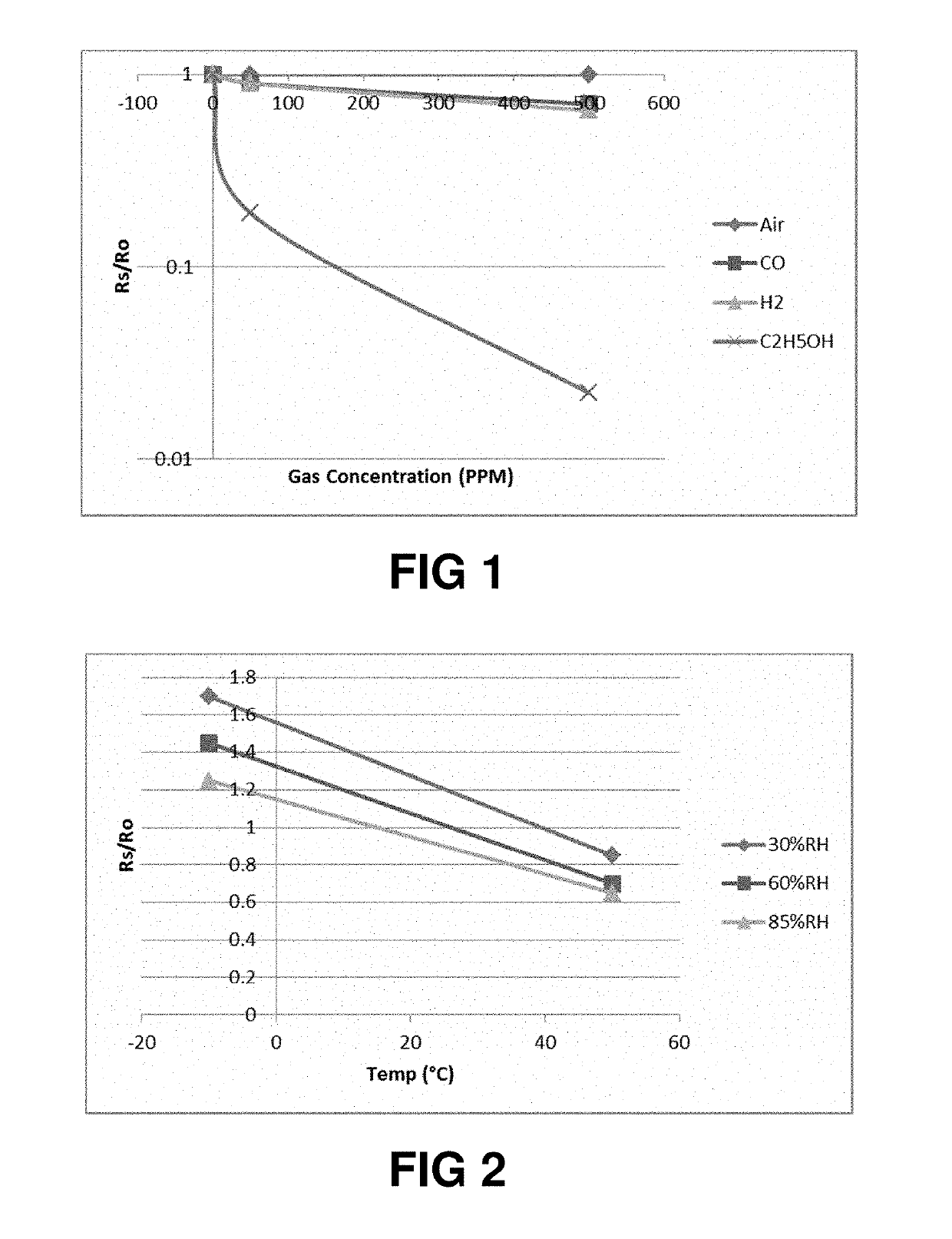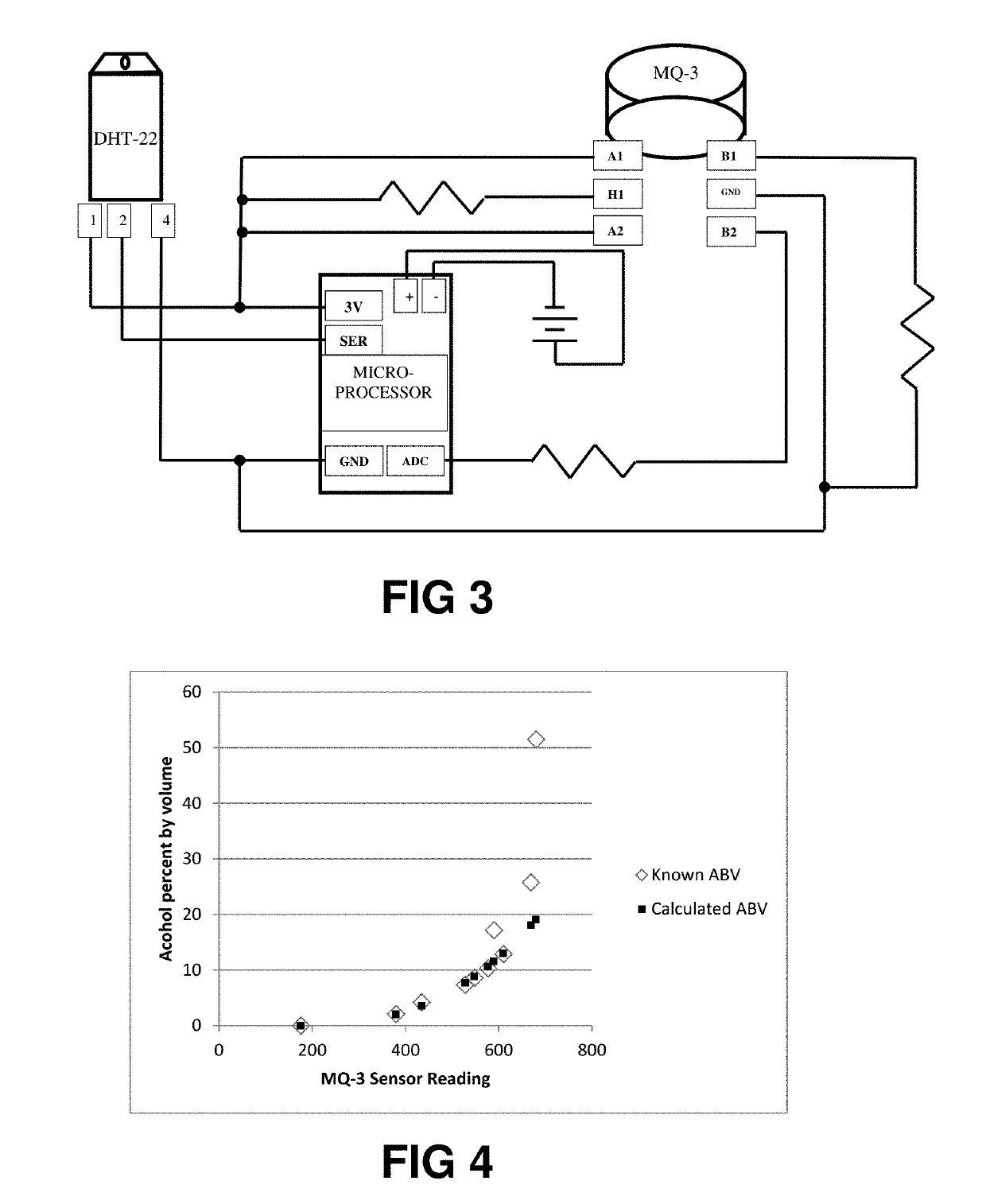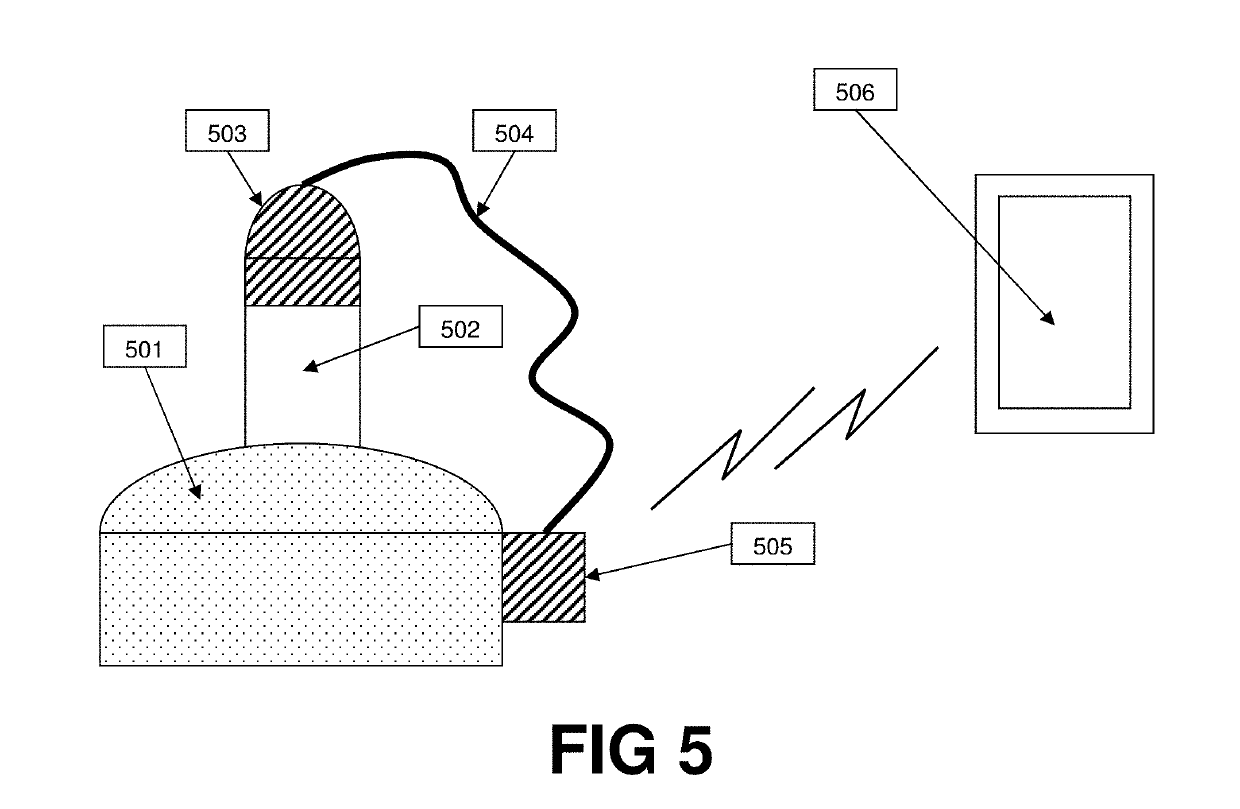Method and Device for Estimation of Alcohol Content in Fermentation or Distillation Vessels
a technology of alcohol content and fermentation vessel, which is applied in the construction details of gas analyzers, instruments, testing food, etc., can solve the problems of inability to accurately calculate abv, reduce the volume of salable products produced by the process, and withdraw a fairly large quantity of liquid, etc., and achieve low cost
- Summary
- Abstract
- Description
- Claims
- Application Information
AI Technical Summary
Benefits of technology
Problems solved by technology
Method used
Image
Examples
Embodiment Construction
[0025]FIG. 1 is from the related art, and is a graph of the steady-state resistivity of an MQ-3 compliant sensor as a function of gas concentration, for three different gases. The graph shows that the sensor is significantly more sensitive to alcohol than to carbon monoxide or hydrogen, such that the presence or absence of either of these two gases may reasonably be ignored without significant effect on the measured value. However, the sensitivity to alcohol is significant, such that the device can be used to detect alcohol vapor that rises up from the liquid in a fermentation or distillation vessel.
[0026]FIG. 2 is also from the related art, and is a graph of the steady-state resistivity of an MQ-3 compliant sensor as a function of temperature and humidity. The graph shows that the readings of the alcohol gas sensor are significantly affected by both temperature and humidity, and that an alcohol vapor concentration measurement based on the readings of the alcohol sensor alone will b...
PUM
| Property | Measurement | Unit |
|---|---|---|
| analog voltage | aaaaa | aaaaa |
| input voltage | aaaaa | aaaaa |
| volume | aaaaa | aaaaa |
Abstract
Description
Claims
Application Information
 Login to View More
Login to View More - R&D
- Intellectual Property
- Life Sciences
- Materials
- Tech Scout
- Unparalleled Data Quality
- Higher Quality Content
- 60% Fewer Hallucinations
Browse by: Latest US Patents, China's latest patents, Technical Efficacy Thesaurus, Application Domain, Technology Topic, Popular Technical Reports.
© 2025 PatSnap. All rights reserved.Legal|Privacy policy|Modern Slavery Act Transparency Statement|Sitemap|About US| Contact US: help@patsnap.com



